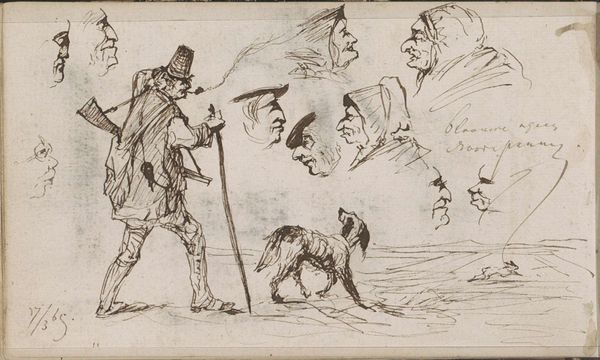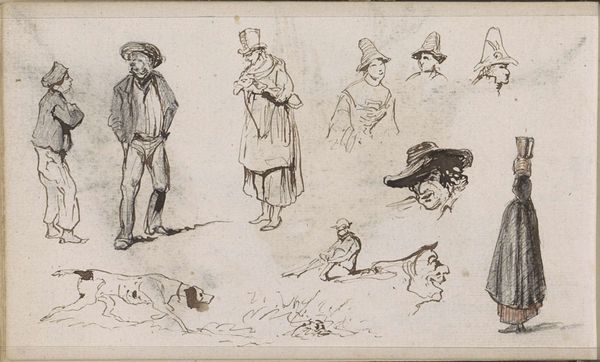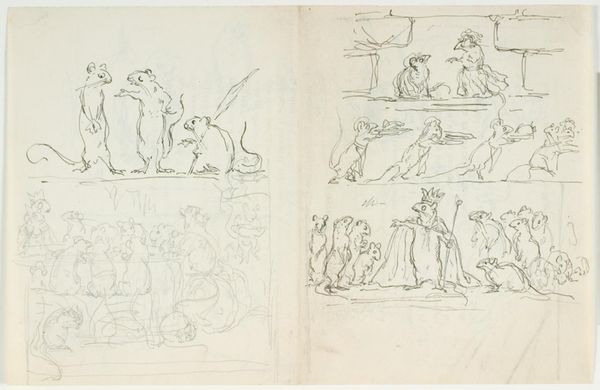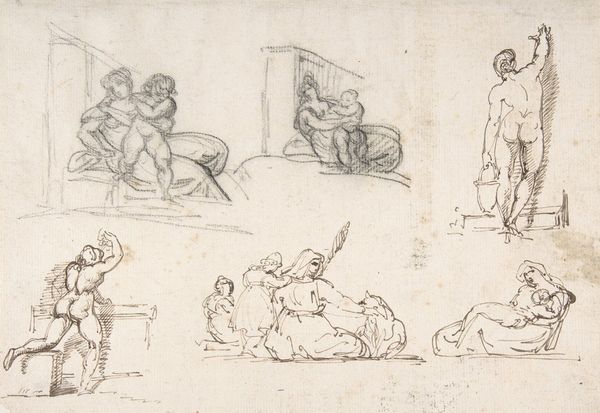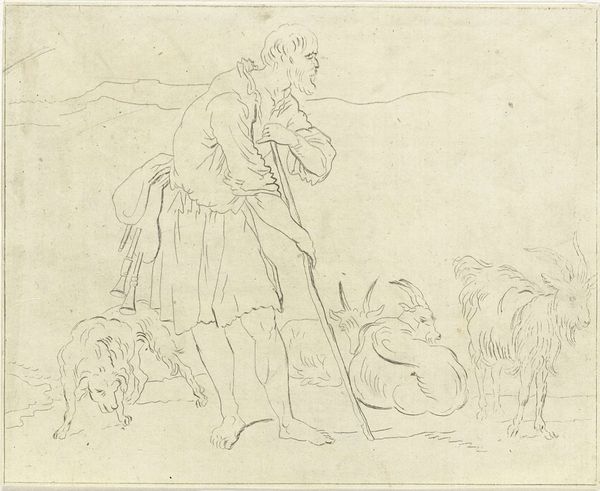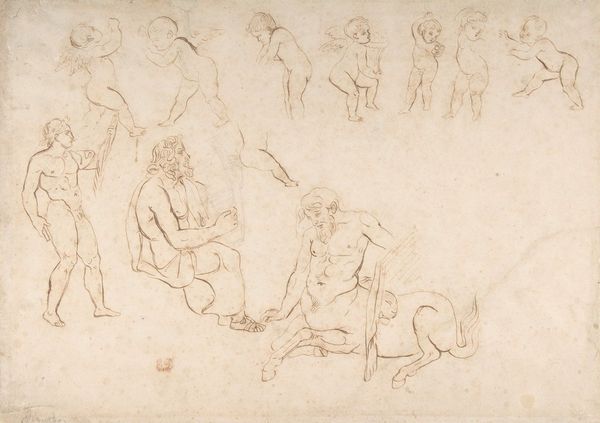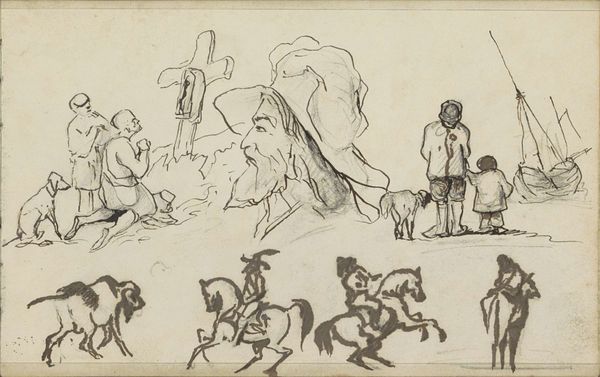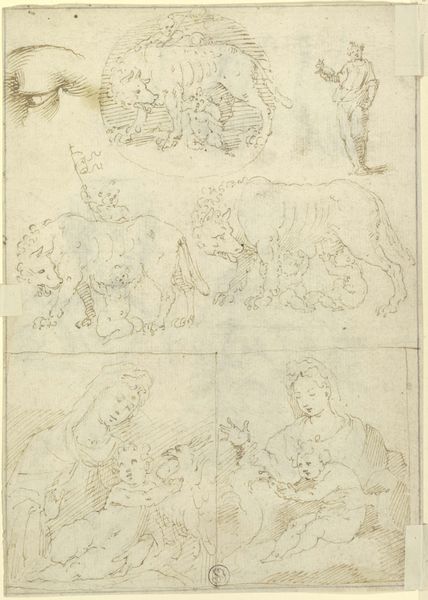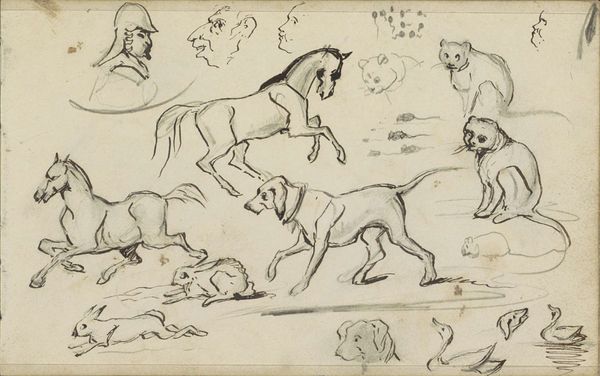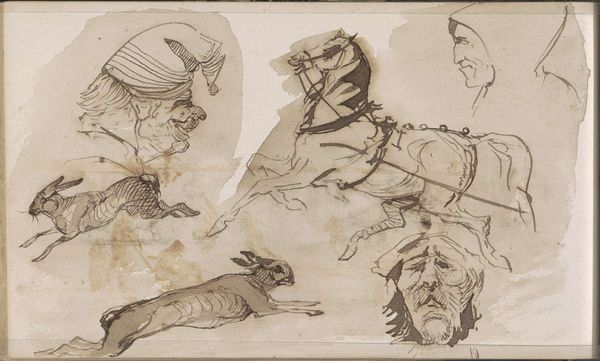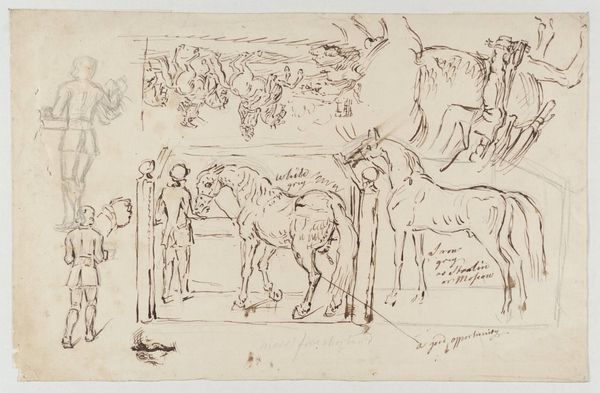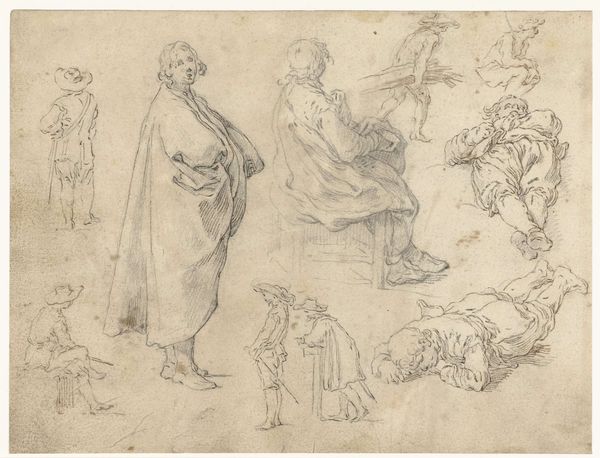
Twee boerinnen in een deuropening, honden en mannen- en vrouwenkoppen 1864 - 1880
0:00
0:00
johannestavenraat
Rijksmuseum
drawing, ink, pen
#
portrait
#
drawing
#
animal
#
pen sketch
#
dog
#
landscape
#
ink
#
sketchbook drawing
#
pen
#
genre-painting
Copyright: Rijks Museum: Open Domain
Curator: Here at the Rijksmuseum, we have a pen and ink drawing entitled "Twee boerinnen in een deuropening, honden en mannen- en vrouwenkoppen," or "Two peasant women in a doorway, dogs and men's and women's heads" by Johannes Tavenraat, likely created between 1864 and 1880. Editor: It’s chaotic, a real jumble of observations! Faces, figures, animals… a page ripped straight from the artist’s working sketchbook. What strikes me is the roughness and the focus on these rural characters. Curator: Exactly. Tavenraat was very interested in depictions of everyday life and particularly in how labor, particularly agrarian labor, shaped the identities of those engaged in it. Look at the textures created with pen and ink— the cross-hatching he uses to define form and light, the relatively inexpensive materials used that also spoke to a kind of accessibility to art-making. Editor: The recurring presence of dogs intrigues me. They’re positioned throughout, not merely as pets, but as integral components of this rustic environment, acting almost like guardians, and this suggests an interwoven relationship between the people and the animal, representative of faithfulness or protection, maybe? Curator: Certainly, and how the rapid lines of the drawing capture a moment of exchange between the women, perhaps gossiping at a doorway. These rural figures signify both independence and interdependence, relying on each other and their animals to perform manual labor and the economy of the rural region. It prompts consideration about the daily routines and collective life in Dutch countryside during this era. Editor: Beyond daily life, I'm drawn to the individualized studies of human heads. Each portrait shows character through distinct expressions and headwear, highlighting social roles within a clear hierarchy of figures. You see, the imagery might not merely be observations but studies intended for other grander compositions. Curator: The varied compositions and rough execution highlight a tangible human act; you’re granted intimate visual access to the labor involved in art, from inception to, theoretically, a refined final version. These fragmented sketches capture what Tavenraat may have viewed as significant moments worth immortalizing, if even in fragmented states. Editor: Fascinating how a seemingly simple sketch unveils so much—both about daily rural life and the persistent symbols ingrained within the culture. Curator: Indeed, the blend of material awareness and representational insight can help one see both the literal building blocks of artwork and broader context in art history.
Comments
No comments
Be the first to comment and join the conversation on the ultimate creative platform.
